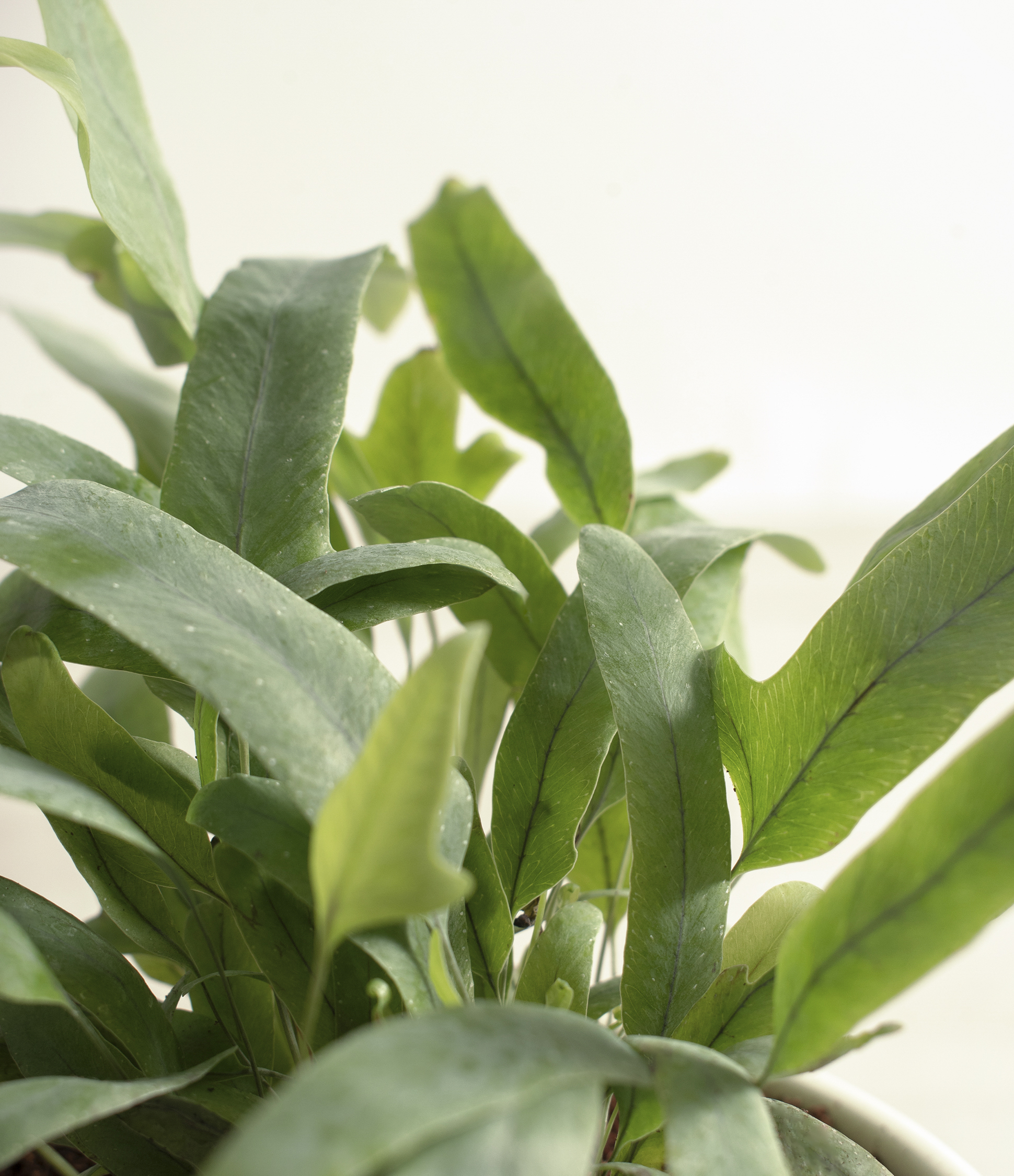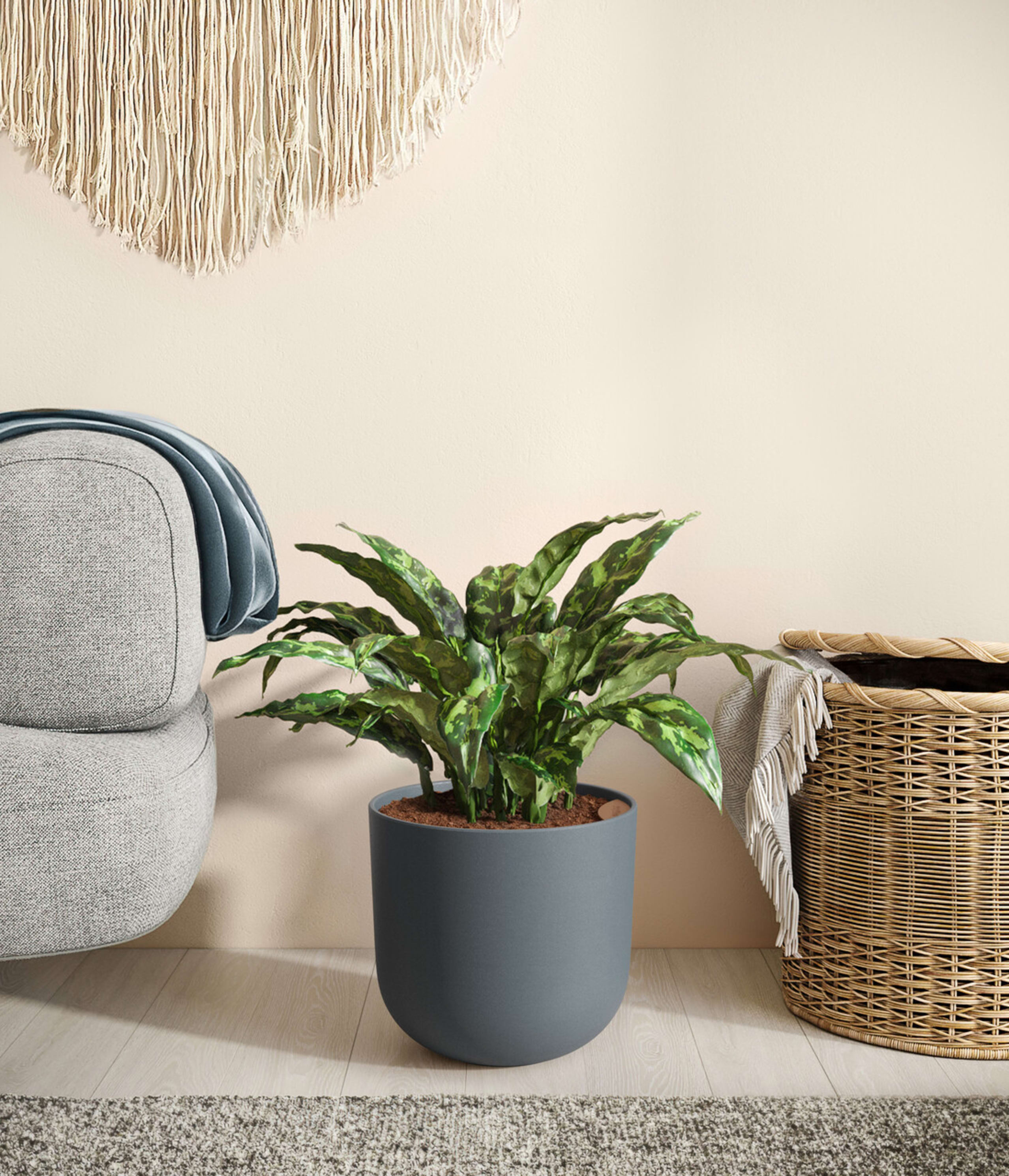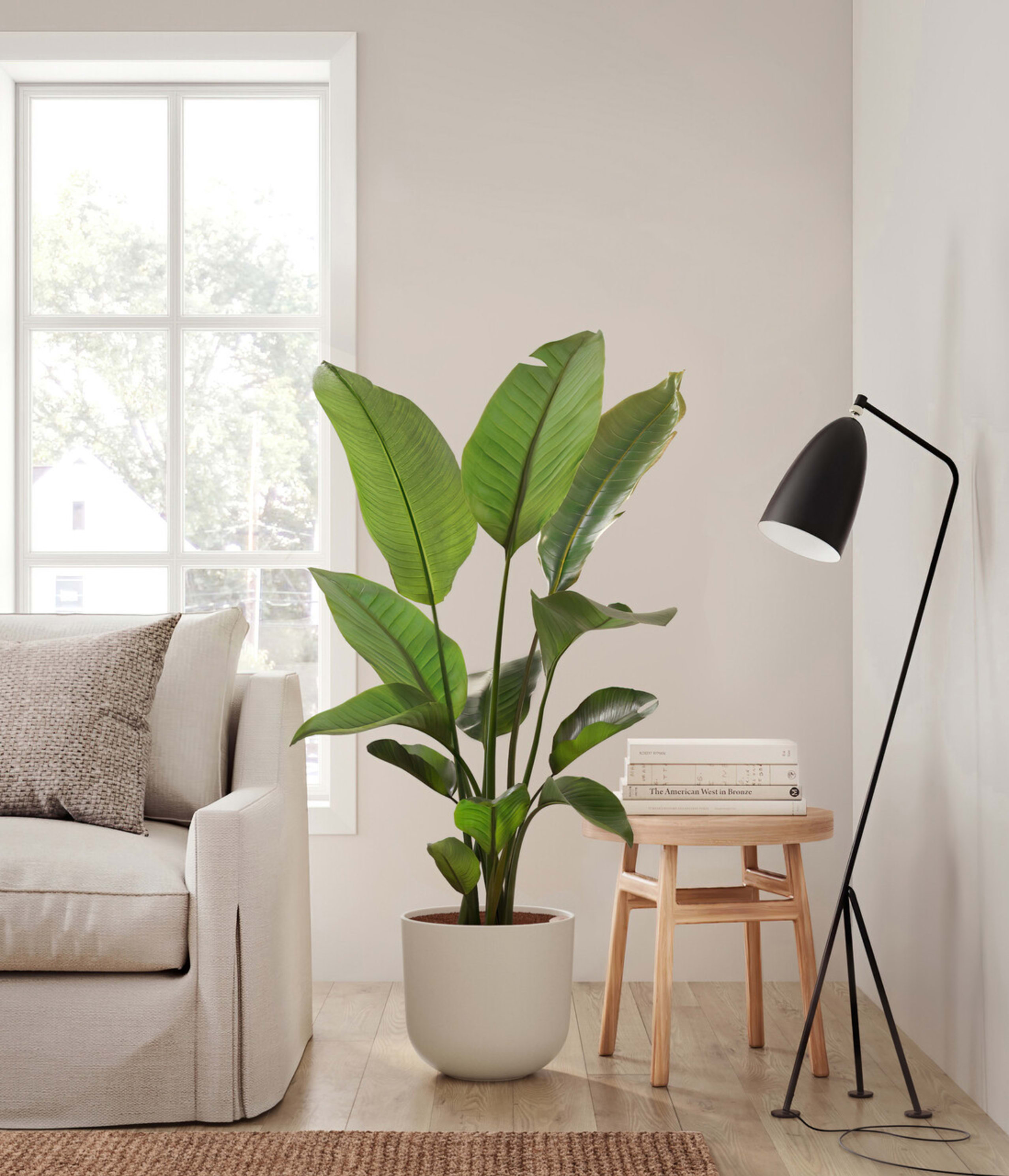How to Care for Blue Star Fern
About Blue Star Fern
From the sheltered forests of Brazil emerges the Blue Star Fern, or Phlebodium aureum, with its blue-green fronds that cascade with a gentle and inviting poise. This fern's distinct coloration and the lush, wavy texture of its leaves bring a relaxed and refreshing vibe to any indoor space. Appreciated for both its visual appeal and its low-maintenance nature, the Blue Star Fern is a resilient addition to any plant collection.
Other common names
- Golden Polypody
- Golden Serpent Fern
- Cabbage Palm Fern
- Gold-Foot Fern
- Hare-Foot Fern
How Often Should I Water My Blue Star Fern?
With easyplant, watering your Blue Star Fern is simple. Just check the easyplant reservoir once a month and fill it when empty, and you’re all set.
Blue Star Fern Light Needs
Blue Star Fern grows best in a space with bright indirect light, where the sun rays are diffused. Avoid placing it in spaces with low light, direct sunlight or spaces without natural light.
A north or east-facing window is ideal, as it provides ample light without the harshness of direct afternoon sun. This ensures it receives the gentle light it needs without the risk of scorching. While adaptable to medium light, avoid low-light conditions and direct sun exposure to maintain the fern's health and coloration.
Blue Star Fern Plant Care
Caring for your Blue Star Fern is straightforward and rewarding, making it a perfect choice for both beginner and experienced plant enthusiasts. Gently rotate your fern each month to ensure it receives balanced light, promoting even growth and maintaining its lush, full appearance. Regularly dusting the fronds not only keeps your Blue Star Fern looking fresh but also enhances its health by allowing more efficient light absorption. Use a soft brush or cloth for this purpose, being careful not to damage the delicate fronds. Choosing the right location is key to the fern's wellbeing. A spot with bright, indirect light is ideal. If you notice the fronds losing color or vitality, a slight adjustment in its placement might be necessary. Keep it away from direct sunlight to prevent any leaf burn or damage. Observing your Blue Star Fern regularly is one of the best care practices. It will communicate its needs through the appearance of its fronds. Simple adjustments in its environment or care routine can make a significant difference in its health and growth. By following these care tips, you ensure that your Blue Star Fern will thrive and bring a touch of serene elegance to your indoor garden.
How Big Will My Blue Star Fern Grow?
The Blue Star Fern is a moderately growing plant, typically reaching up to 2-3 feet in height and width. Its lush, arching fronds can create a visually stunning display when placed on a shelf, in a well-lit corner of a room, or atop a pedestal plant stand. Such placements allow the fern to fully showcase its natural beauty and blend seamlessly with your interior decor.
Temperature & Humidity
The Blue Star Fern prefers a warm environment, thriving best in temperatures between 60-75°F (15-24°C). It also enjoys high humidity levels. To naturally increase humidity, consider placing your fern in a bathroom if it has enough light, or group it with other plants to create a more humid microclimate. Keeping it away from drafts and heating vents will help maintain consistent temperature and humidity levels.
Is Blue Star Fern Toxic for Pets & Kids?
One of the great advantages of the Blue Star Fern is its non-toxic nature, making it safe for homes with pets and children.
Troubleshooting Common Problems with Blue Star Fern
If you notice the lower fronds of your Blue Star Fern turning brown, there's no need for alarm. This is often part of the natural aging process. Patiently wait for these fronds to loosen naturally before gently removing them, encouraging new growth. If your Blue Star Fern's fronds are turning yellow or brown, this might be a sign of water imbalance. With easyplant, ensure you're not overfilling the reservoir. In standard pots, check that you're not overwatering and allow the top inch of soil to dry out between waterings. Should you spot any signs of dark or yellow spots, or if the fronds start to look unhealthy, it might be an indication of pests or environmental stress. Regularly cleaning the fronds with a soft, damp cloth can help ward off pest issues and improve the plant's ability to photosynthesize effectively. If the fronds begin to show signs of scorching or curling, your fern might be exposed to too much direct sunlight. The Blue Star Fern flourishes in bright, indirect light, so moving it to a spot with filtered light should help. Remember, the Blue Star Fern is generally easy to care for, but it might take some time to adjust to your home environment. With careful observation and simple adjustments, you can quickly address these common issues, ensuring your fern remains a lush and vibrant feature in your space.
Frequently Asked Questions about Blue Star Fern Plant
- What type of light does Blue Star Fern need?
Blue Star Fern thrives in bright, indirect light. It can tolerate medium light but should be kept away from prolonged direct sunlight.
- Is Blue Star Fern toxic to pets and kids?
No, the Blue Star Fern is non-toxic, making it a safe choice for households with pets and children.
- How often should I water my Blue Star Fern?
In an easyplant pot, just fill the reservoir once a month. In regular pots, water when the top inch of soil feels dry, usually every 1-2 weeks.
- How to troubleshoot problems with Blue Star Fern?
Common problems like yellowing or drooping leaves can often be fixed by adjusting watering habits and ensuring the plant is in a suitable location with adequate light and humidity.

 Small Plants
Small Plants Medium Plants
Medium Plants Plants Collections
Plants Collections Large Plants
Large Plants Huge Plants
Huge Plants